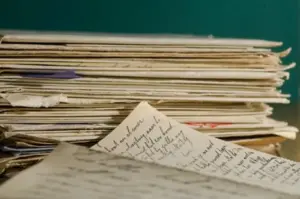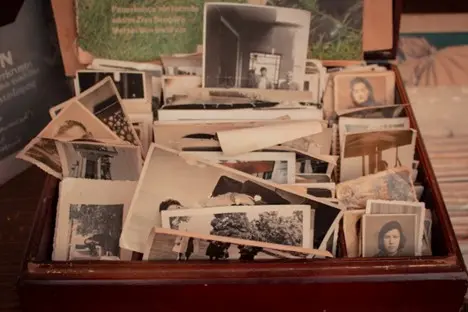 This is Preservation Week (April 28 – May 4)! Celebrated annually during the last week of April, this special day serves as a reminder to make sure that your genealogical research and family history documents, photos, records, etc. last for years to come! There are many ways that you can accomplish this, depending upon the types of physical items you have.
This is Preservation Week (April 28 – May 4)! Celebrated annually during the last week of April, this special day serves as a reminder to make sure that your genealogical research and family history documents, photos, records, etc. last for years to come! There are many ways that you can accomplish this, depending upon the types of physical items you have.
To determine what you need to preserve, it is best to begin by inventorying and organizing your collections. This will help you get a clearer sense of the scope and needs. Once you have done this, you can begin to investigate the best practices for preserving each physical item. Generally, this will involve buying various archival supplies which are free of harmful chemicals and will protect your items.
While each item is unique, there are some common suggestions and steps that are usually taken to preserve them. Check out these suggestions for documents and photos.

- Flatten Items (Unfold/roll if Possible)
- Remove Staples and Paperclips
- Store in Separate Folders
- Place in Cool (Not Humid), Dark Area
- Separate Them (Remove from Albums if Possible)
- Place in Acid/Lignin Free Sleeves
- Use Gloves When Handling
- Place in Cool (Not Humid), Dark Area
If you are looking for additional reading, check out the Smithsonian’s Tips, Amy Johnson Crow’s Suggestions, or MyHeritage’s Ideas. We also have several books about preserving genealogy materials at the library. The Archive Lady has a great video, too.
Of course, digitization (AKA scanning) is a great way to create additional copies of your items; however, it should not be viewed as a replacement for the physical item. If you are interested in scanning, we have some tools in the digital studios that may be what you need, and we have regular workshops that detail how to convert physical into digital. Just like physical items, digital items require care and diligence. Finding stable file formats (e.g., TIFF, GEDCOM, etc.) and making sure that storage device as well as software that plays it do not become obsolete are absolute musts. In the end, digitization allows for less handling of physical items which is often key to long-term preservation.
Finally, remember the 3-2-1 method for physical/digital preservation! THREE copies of your item, stored in TWO places, with ONE offsite. Many times, this means that you have the physical item, with copies saved online and on a hard drive. There are other ways to “do the math,” but this is one of the most common scenarios. May your preservation efforts not be in vain!
Categories: Genealogy
Tags: Genealogy
